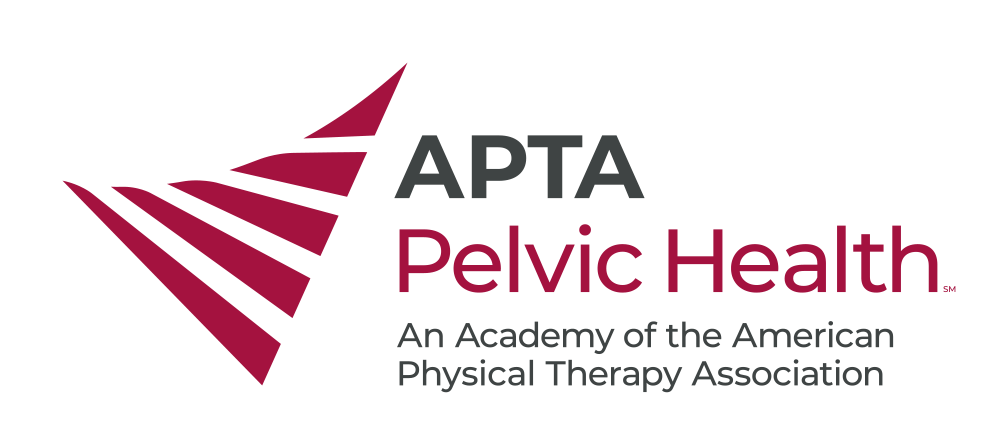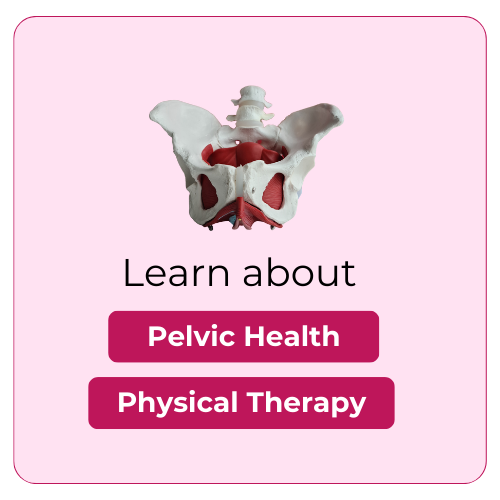My Journey to Becoming a Pelvic Health PT: Lessons, Challenges, and Rewards
I’ll admit, when I first started my journey to become a pelvic health PT, I was hesitant. The thought of diving into a new specialty felt overwhelming, and I had put off taking a pelvic health course for quite a while—especially that first lab, which was a bit intimidating. But in my orthopedic PT practice, I began to realize that I was missing crucial knowledge about the pelvic floor and how its health impacts other body areas I was treating. Over the years, I had worked with pregnant and postpartum patients, as well as patients dealing with back and hip pain, but I often found myself encountering pelvic health issues that I wasn’t equipped to manage. I would refer to my pelvic health PT peers for co-treatment, but they were busy, and I knew that if I truly wanted to make a difference for my patients, I had to step into this specialized world of care myself. It was time to invest in the knowledge and skills that would allow me to help my patients more effectively.
Taking the Leap – The Decision to Become a Pelvic Health PT
It wasn’t until 2023 that I finally took the plunge and signed up for PH1. The course was incredibly eye-opening, and it sparked my interest in the complexities of pelvic floor dysfunction. I gained the tools I needed to make a real difference for my patients, and I quickly realized that this wasn’t just another specialty to add to my skill set—it was exactly what I was meant to be doing.
The Challenges of Mentoring, Learning, and Growing
Mentorship has played a crucial role in my development as a pelvic health PT. The team I work with has been incredibly supportive, guiding me through the nuances of pelvic floor assessments and treatments. One of the more difficult aspects of pelvic health PT for me was learning to integrate EMG biofeedback into my practice. The process felt complex at first. Mastering the setup, understanding the feedback, and interpreting the results took some time and patience, but the rewards of seeing how it empowers patients to connect with their pelvic floor have been absolutely worth it.
The Impact on Patients – Insights into Pelvic Health
The most powerful lessons I’ve learned have come from my patients. Pelvic health issues often extend far beyond physical pain—they’re deeply emotional and tied to experiences of trauma, vulnerability, and fear. I’ve worked with women navigating intimacy struggles after severe perineal tearing, as well as those managing leakage in postmenopausal bodies. What strikes me every time is the incredible courage my patients show in sharing their struggles, especially when it comes to women who have been discouraged from discussing their intimate concerns. One of the most transformative moments for me was helping a postpartum patient regain her confidence after years of pain and fear, simply by introducing diaphragmatic breathing and reverse kegel exercises. It’s moments like these that constantly remind me why this work is so important.
Why I’m Still Doing This – Finding Purpose in Pelvic Health PT
Ultimately, pelvic health PT is about far more than treating physical dysfunction—it’s about healing the mind and body together. What I’ve found is that this work aligns so much more with my heart and the kind of care I’ve always wanted to provide. As much as I’ve loved orthopedic PT, there’s something incredibly powerful about the connections I make in pelvic health. Even when trying to connect with my orthopedic patients, I’d still often find myself going through the motions prescribing 2x10 reps of biceps curls. There’s a difference when I’m working with patients on deeply personal and transformative issues. The emotional depth and trust that comes with pelvic health care create a bond that’s unlike anything I’ve experienced in my practice before.
It feels like this is where my heart has always been—helping people on a level that goes beyond just the physical, into the realm of emotional healing, empowerment, and reclaiming one's body. The connections I’ve made with patients, and the stories they’ve shared, have not only expanded my understanding of the human body but also deepened my sense of purpose as a PT.
I will be the first to admit that I still have so much to learn—especially when it comes to areas like bowel health and men's health, which I’m eager to dive deeper into. I’m incredibly grateful for the ongoing support from the Academy of Pelvic Health Physical Therapy, whose resources and community have helped guide me in this journey. Their continuous learning opportunities have been instrumental in helping me grow, and I look forward to continuing to learn, refine my skills, and expand the scope of care I can provide.
I’ve seen women reclaim their confidence, overcome years of discomfort, and regain their vitality—and that’s why I continue to show up every day. There’s a unique and profound impact that pelvic health PT has on patients, and I’m privileged to be a part of that transformation.
Conclusion
Becoming a pelvic health PT has been an unexpected, but incredibly rewarding journey so far. To anyone considering making the leap: it may feel overwhelming at first, but trust me, the rewards are worth it. The opportunity to empower individuals, to help them heal physically and emotionally, is one of the most impactful things you can do. If you’re already on this path, keep going. You’re making a real difference in people’s lives every single day. Together, we can continue to break barriers and help our patients live fuller, healthier lives.
About the Author

Allison Waddell, PT, DPT, Board-Certified Orthopedic Clinical Specialist
Allison Waddell is a physical therapist specializing in both orthopedic and pelvic health PT. She earned her Bachelor’s degree in Medical Biology at University of New England, and her Doctor of Physical Therapy degree from Virginia Commonwealth University. In 2015 she obtained her Orthopedic Clinical Specialist board certification to further enhance her expertise. With years of experience treating pregnancy/postpartum, cancer rehab, and musculoskeletal concerns, she found her passion for pelvic health and is dedicated to empowering individuals to regain their confidence, improve their quality of life, and navigate the complexities of pelvic health. Allison currently works in a hospital-based outpatient clinic with a hybrid orthopedic and pelvic health caseload, where she continues to grow and expand her knowledge in the field.


